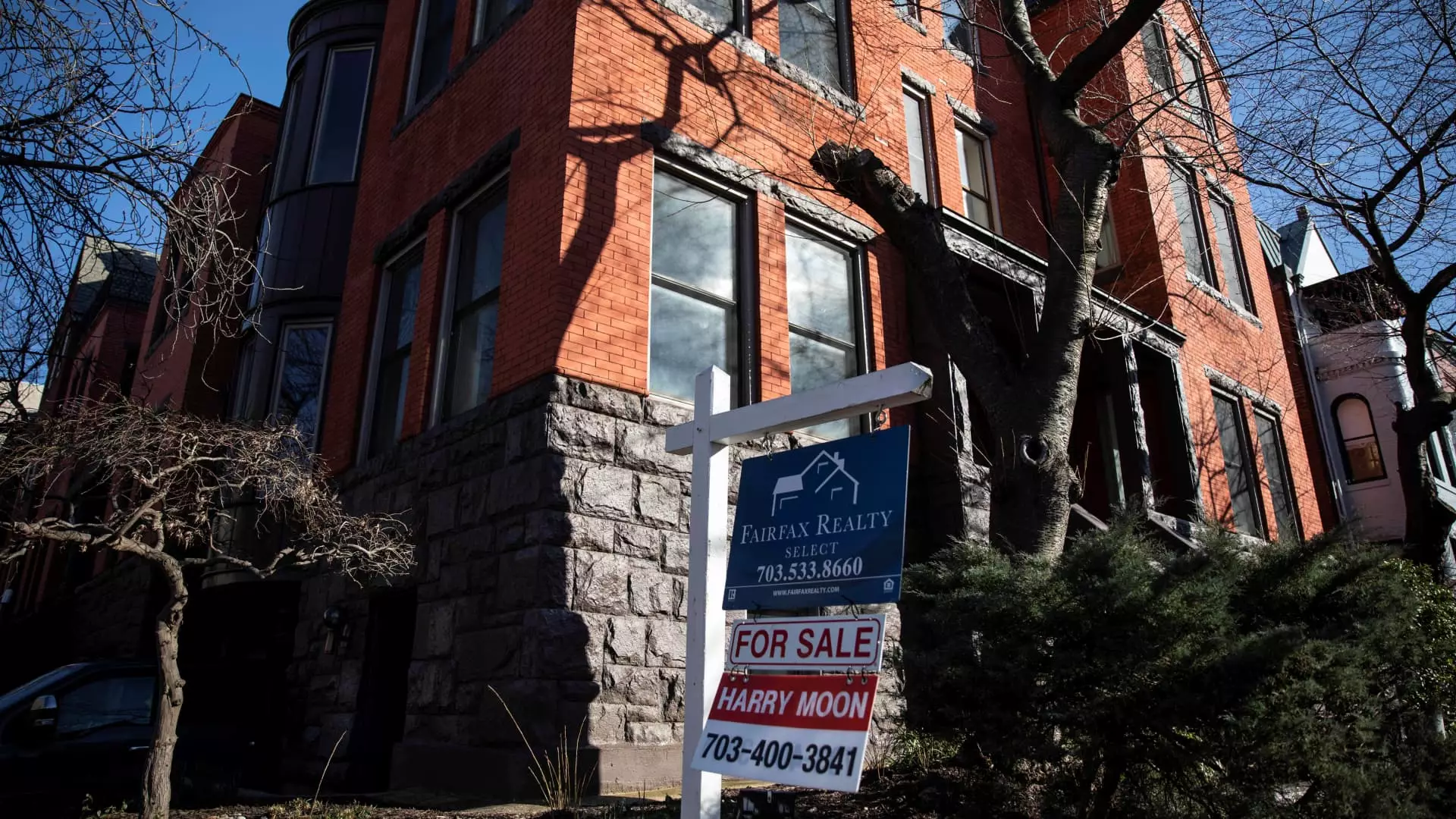The housing market has historically seen an uptick in inventory as warmer spring months approach, yet the current situation in the Washington, D.C., metropolitan area paints a stark and unsettling picture. The region, which encompasses the District along with neighboring Maryland and Virginia suburbs, is not merely experiencing a seasonal increase; it is witnessing an alarming spike in housing inventory. Recent data reveals a staggering 35.9% increase in inventory in January and a 41% rise in February compared to the same months in the previous year. As of the latest figures, listings have shot up by a jaw-dropping 56% from a year earlier. Such an explosive growth raises essential questions about market dynamics and economic stability.
The Shadow of Federal Employment Cuts
Analysts are suggesting that the surge in inventory is not a sign of health within the housing market. Instead, it seems to signal underlying economic anxiety, particularly following recent federal layoffs and funding cuts. For those employed by the federal government—a demographic whose livelihood is closely tethered to the whims of policy and funding—this is not just an economic fluctuation; it is a crisis. Danielle Hale, the chief economist for Realtor.com, highlights this concern, indicating that unemployment and insecurity have led potential buyers to pause their home searches. The subsequent decline in buyer activity has exacerbated the situation, with inventory swelling despite a modest rise in new listings.
National Context and Market Comparison
While D.C. is grappling with its unique challenges, it’s vital to contextualize these figures within a national framework. Across the United States, active listings surged by 28%, coinciding with declining mortgage rates, which recently dropped to around 6.82% from mid-January’s 7.25%. However, this is not enough to alleviate fears for the D.C. market. The disparity between national trends and localized challenges underscores how niche contexts can significantly sway market behavior. The United States may be seeing a general recovery in the housing market, but D.C. seems trapped in a quagmire of uncertainty.
A Silver Lining in Development?
Signs of new development amid the chaos suggest a mixed future. The notable uptick in inventory is partly credited to a growing number of newly constructed condominiums and townhomes. Developers, perhaps emboldened by low-interest rate environments, have increased their output in recent years. These newly-built units represent a significant share of the listings, shifting the market dynamics considerably. However, as exciting as new development can be, consumers must remain wary. The current landscape reflects a trend towards smaller, lower-end homes—properties that appeal less to first-time buyers and more to investors and renters, potentially skewing the desirability of the new product available.
The Price Paradox
Cutting through this snapshot of data is a key trend: housing prices in the D.C. area are actually declining. The median list price has dipped by 1.6% year-over-year—the second consecutive quarterly decline noted. Contextually, this drop seems minor; however, it hints at deeper selling pressures that many sellers still refuse to recognize. In stark contrast, while the national median price dipped slightly by 0.2%, the local market fluctuations, filled with tension, proffer a more indicative view of consumer sentiment and economic stability.
Moreover, as market forces continue to create pressure, it becomes critical to discern the difference between a market correction and an outright crash. The numbers can often deceive, masking longer-term trends that could prove detrimental for those heavily invested in the local real estate landscape.
Implications for the Future
The considerable increases in inventory and fluctuating prices highlight a looming uncertainty for both buyers and sellers in the D.C. metropolitan area. As this trend gains traction, it’s essential to scrutinize the economic landscape beyond just the numbers, for the ramifications could be far-reaching and profound. The changes are indicative of broader challenges within the economy, with implications for employment, spending, and, ultimately, the health of the housing sector. The question remains: will housing market recover, or are we witnessing the onset of something more sinister?


Leave a Reply